
Overview of Live Event Technology Options

In the world of event management, creating impactful presentations is essential to captivate your audience, whether you're organizing a live showcase or a virtual event. Event planners know the importance of a well-crafted presentation to convey the vision, scope, and unique aspects of their event. Event showcase presentations play a pivotal role in engaging stakeholders and creating anticipation. This article dives into the art of creating compelling event planning presentation slides and mastering virtual event presentation design to help you deliver successful events.
Introduction to the Diverse World of Live Event Technology
The landscape of live event AV production is ever-evolving, with innovations designed to captivate and engage audiences like never before. Among these advancements, live event technology stands out as a cornerstone for creating immersive and unforgettable experiences. This broad category encompasses a range of audiovisual (AV) tools and equipment, including high-resolution LED panels, custom video wall displays, and wide screen event technology, all tailored to enhance the visual and auditory impact of presentations and performances.
The Evolution and Impact of Live Event Technology
Historically, live events relied on basic sound systems and rudimentary visual aids. However, the advent of LED technology and digital innovations has revolutionized the industry. Today, organizers have access to a suite of high-end AV production tools that allow for the creation of dynamic environments, from led video wall presentations to immersive audio landscapes. This progression not only elevates the attendee experience but also expands the creative possibilities for event planners and marketers.
Real-World Applications and Advancements

In recent years, major conferences, concerts, and corporate events have showcased the power of live event technology. For example, LED wall technology and big screen presentations have become a staple in large venues, offering superior image quality and flexibility in content display. Similarly, the integration of LED wall content production into live performances has enabled artists to craft visually stunning backdrops that complement their acts, creating a cohesive and immersive experience for the audience.
Validating Trends with Industry Insights
Research and market analysis underscore the growing demand for advanced live event technology. According to industry reports, the global market for LED displays, which includes LED walls and video walls, is projected to witness significant growth, driven by the demand for high-quality display solutions in events and public spaces. This trend is supported by the increasing preference for visually engaging and technologically sophisticated presentations, highlighting the critical role of AV production in modern live events.
Using well-organized event planning presentation slides can streamline your event’s workflow, from logistics to scheduling. These slides serve as a roadmap for the entire event, helping teams collaborate effectively, ensuring that each element is in place and runs smoothly. A clear structure simplifies decision-making and enhances team communication.
Integrating High-Resolution LED Panels for Visual Impact
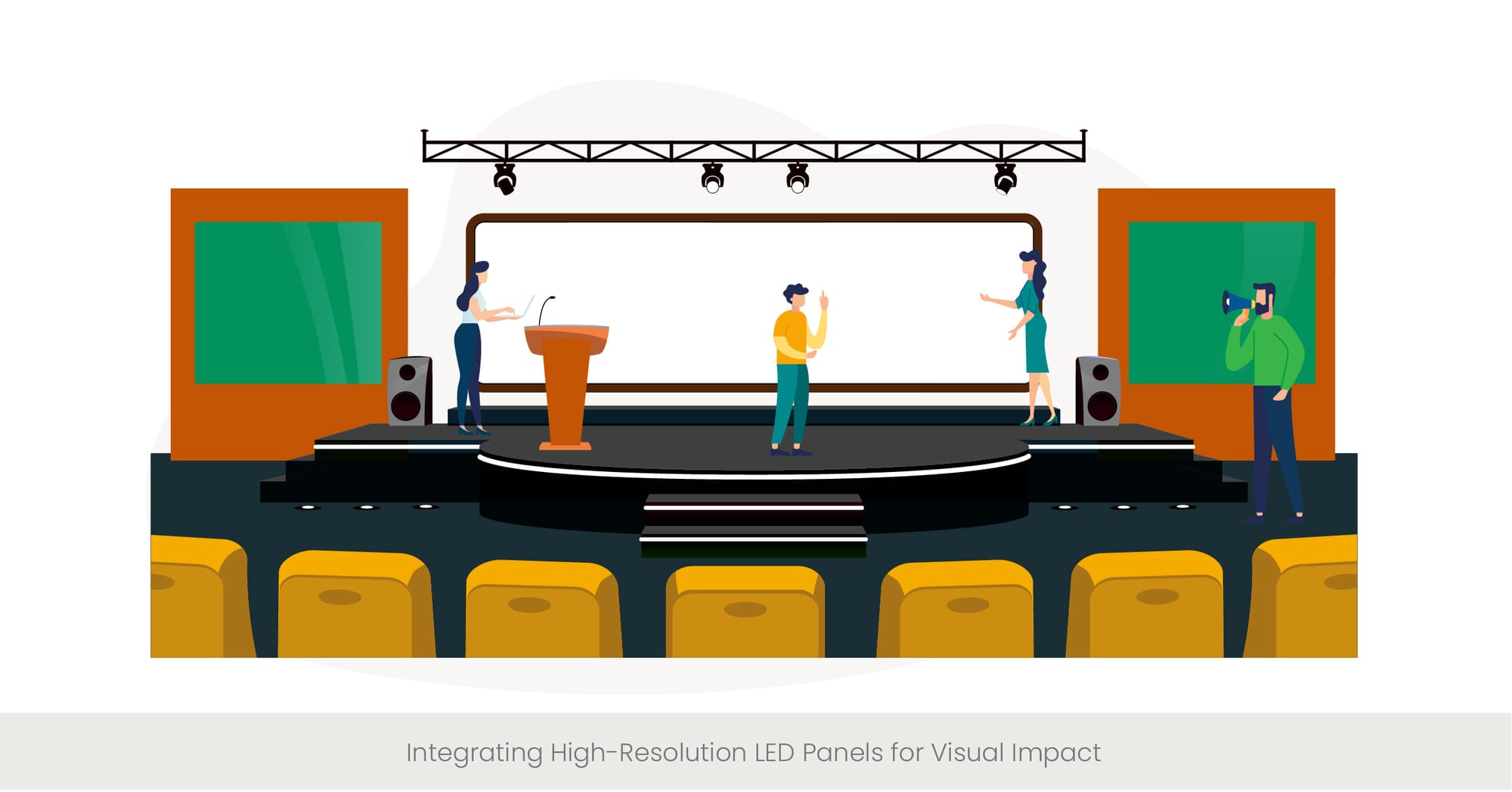
Elevating Events with High-Resolution LED Panels
In the realm of live event AV production, the visual component plays a pivotal role in creating memorable experiences. High-resolution LED panels stand at the forefront of this visual revolution, offering unparalleled clarity, vibrant colours, and dynamic content possibilities. These panels are not just tools for display; they are gateways to immersive environments that captivate audiences, making every event a spectacle of light and motion.
The Technical Brilliance Behind LED Panels
High-resolution LED panels for events leverage advanced technology to deliver superior image quality. With their high pixel density, these panels produce images that are incredibly sharp and detailed, even when viewed from close distances. This is a significant upgrade from traditional projection systems, where image clarity can degrade with proximity. The technology behind high brightness of these panels, including advancements in LED technology and pixel pitch optimization, ensures that every visual displayed is vivid and engaging.
Spotlight on Success: Case Studies of LED Impact

The application of high-resolution LED panels can be seen in a variety of settings, from major trade shows to exclusive concerts. One notable instance is the use of LED video walls at technology conferences, where startups and tech giants alike showcase their innovations on grand scales, drawing attendees into a visually rich narrative. Another example is in the entertainment industry, where artists use LED walls to add depth and context to their performances, creating a fully immersive experience that extends beyond the music.
Industry Validation and Future Directions
The effectiveness of high-resolution LED panels is well-documented, with numerous studies highlighting their impact on audience engagement and brand recall. For instance, research has shown that visuals displayed on LED screens are significantly more memorable to audiences than those shown through traditional mediums, with the vividness of LED screen displays playing a key role in this enhanced recall. As technology continues to advance, the future of LED panels promises even higher resolutions, greater flexibility, and more innovative applications in live events, solidifying their place as a staple of immersive presentations.
Custom Video Wall Displays for Branding
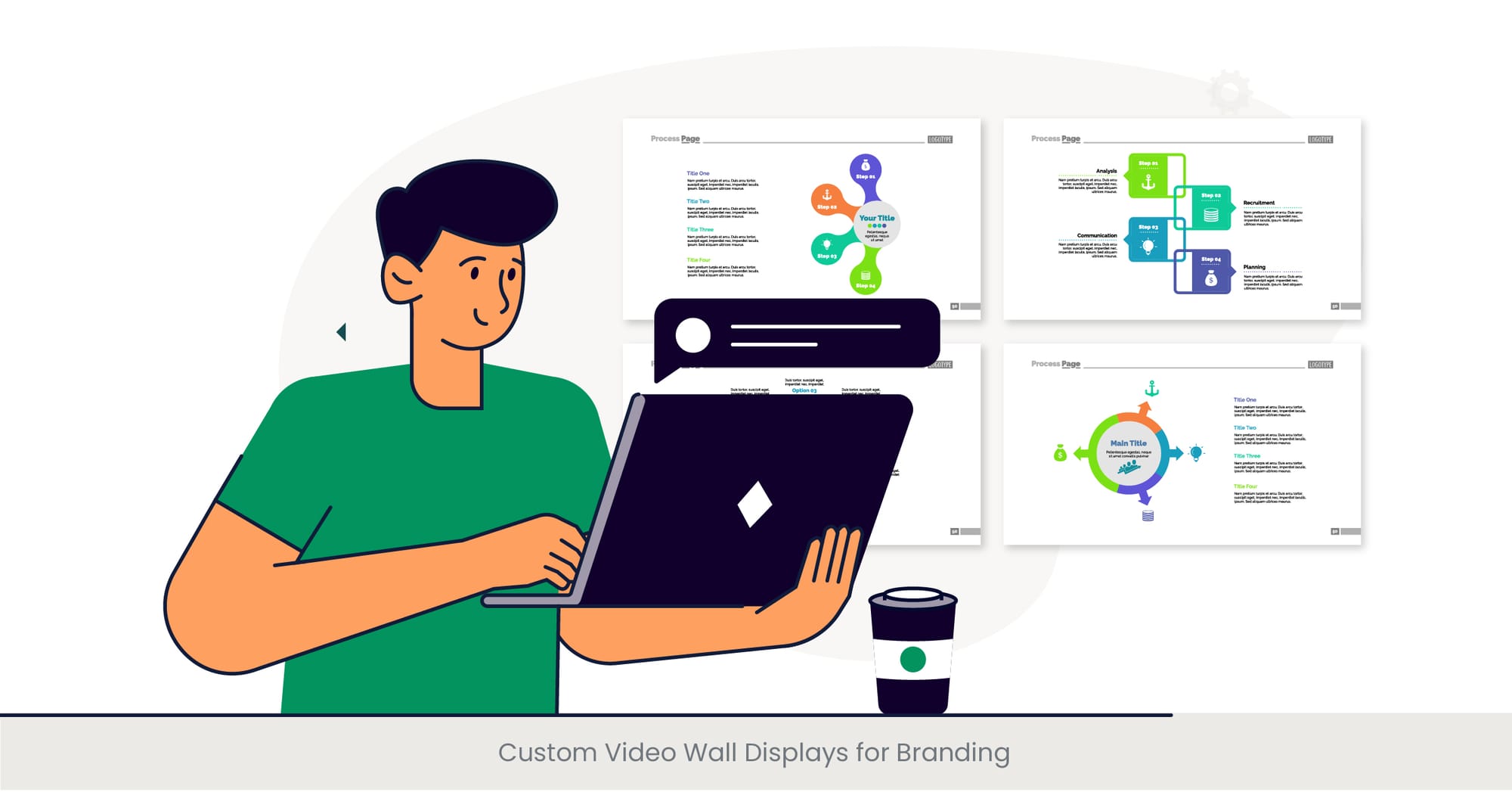
Creating Brand Identities with Custom Video Walls
In the competitive landscape of live events, establishing a strong brand presence is crucial. Custom video wall displays offer a powerful solution, providing a canvas for companies to visually articulate their brand story. These dynamic displays are not merely backdrops but pivotal branding tools that engage, inform, and inspire audiences. With the ability to customize size, shape, and content, video walls present a unique opportunity for brands to make a lasting impression at events, trade shows, and conferences.
The Evolution of Video Wall Technology for Branding
Historically, branding at events relied on static banners and signs. However, the advent of video wall technology has transformed this practice. Today, brands can utilize LED video walls and digital signage to create interactive and engaging displays that capture the essence of their identity. The development of LED display technology, including the integration of high-resolution panels and sophisticated content management systems, has enabled brands to convey their messages more effectively, fostering a deeper connection with their audience.
Real-World Branding Successes with Video Walls

A testament to the impact of custom video wall displays can be found in retail environments and flagship store launches, where brands leverage these tools to create immersive shopping experiences. For instance, a leading fashion brand utilized a massive LED video wall at the front access their flagship store to showcase runway shows and behind-the-scenes content, enveloping customers in the brand's world. Similarly, at auto shows, car manufacturers employ custom video walls to present high-definition visuals of their vehicles in action, enhancing product appeal and driving customer engagement.
Supporting Data and Industry Insights
The strategic use of video wall displays in branding is supported by data indicating increased engagement and brand recognition. Surveys conducted at various events have revealed that installations featuring dynamic and interactive video content significantly outperform traditional static displays in attracting attendee attention and improving brand recall. Industry experts predict that the demand for custom video wall displays will continue to rise as more companies recognize their potential to create meaningful and lasting brand experiences.
As the popularity of online events continues to grow, designing captivating virtual event presentation designs becomes critical. These presentations must cater to digital audiences, incorporating interactive elements like live polls, breakout rooms, and Q&A sessions to enhance engagement, ensuring the event's success in a remote or hybrid format.
Utilizing Wide Screen and Immersive Technology
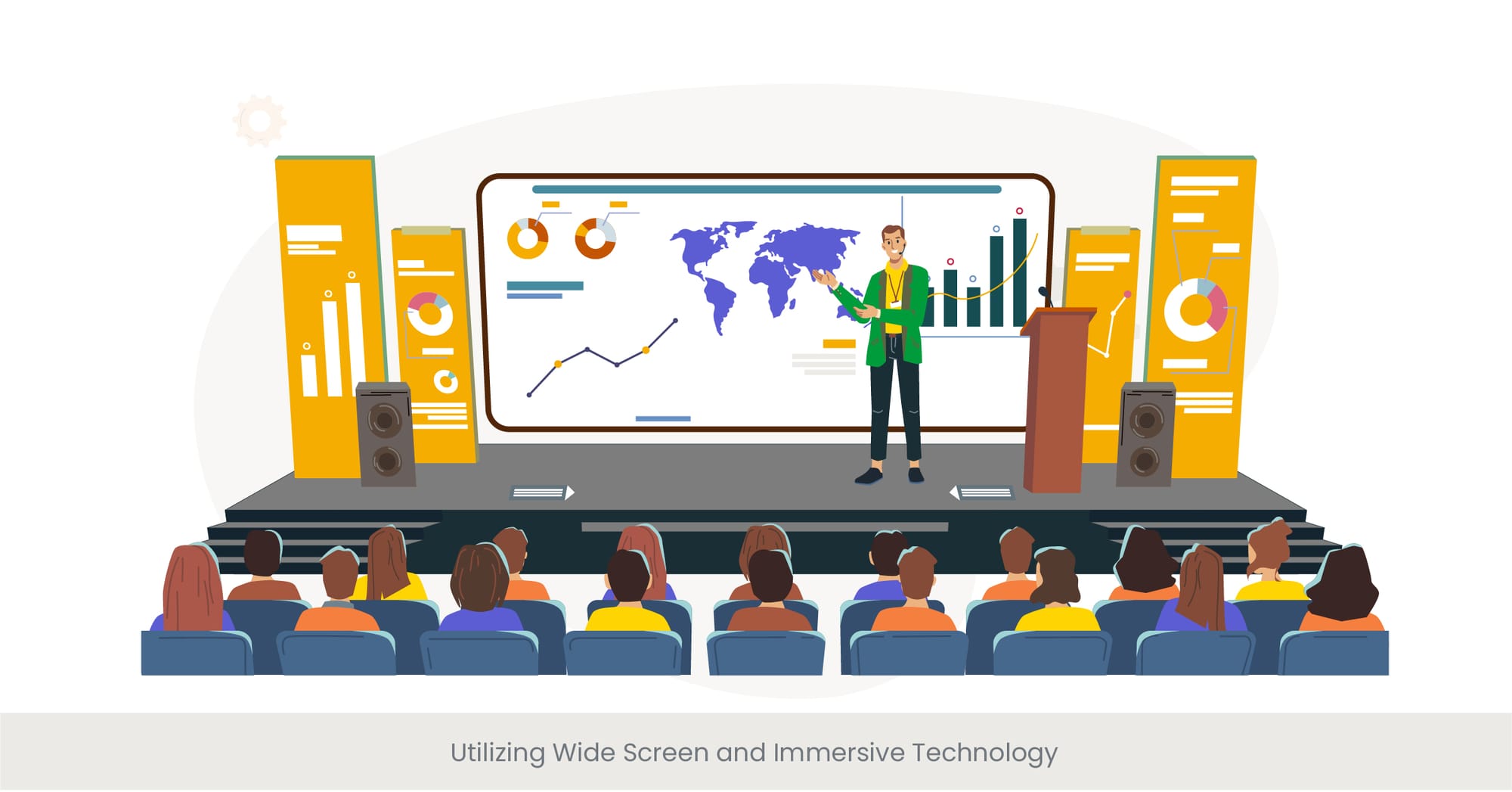
The Era of Wide Screen and Immersive Event Experiences
Wide screen event technology and immersive technologies are revolutionizing how audiences experience live events. These innovations extend beyond traditional visual displays, creating environments where attendees are not just viewers but active participants in a sensory journey. Wide screens, with their expansive displays, coupled with immersive technologies like virtual reality (VR) and augmented reality (AR), offer a new dimension of engagement, transforming any event into an unforgettable adventure.
Behind the Scenes: The Technology Powering Immersion
The backbone of immersive presentations lies in the seamless integration of wide screen displays with cutting-edge immersive technology. Wide screens provide a panoramic view that captures the audience's attention, while immersive technology like VR and AR adds depth to the experience, making it more interactive and engaging. This synergy requires sophisticated software and hardware, including high-resolution LED panels for events and videos, advanced graphic processors, and intuitive content management systems to synchronize visuals and interactions smoothly.
Showcasing the Potential: Immersive Technology in Action
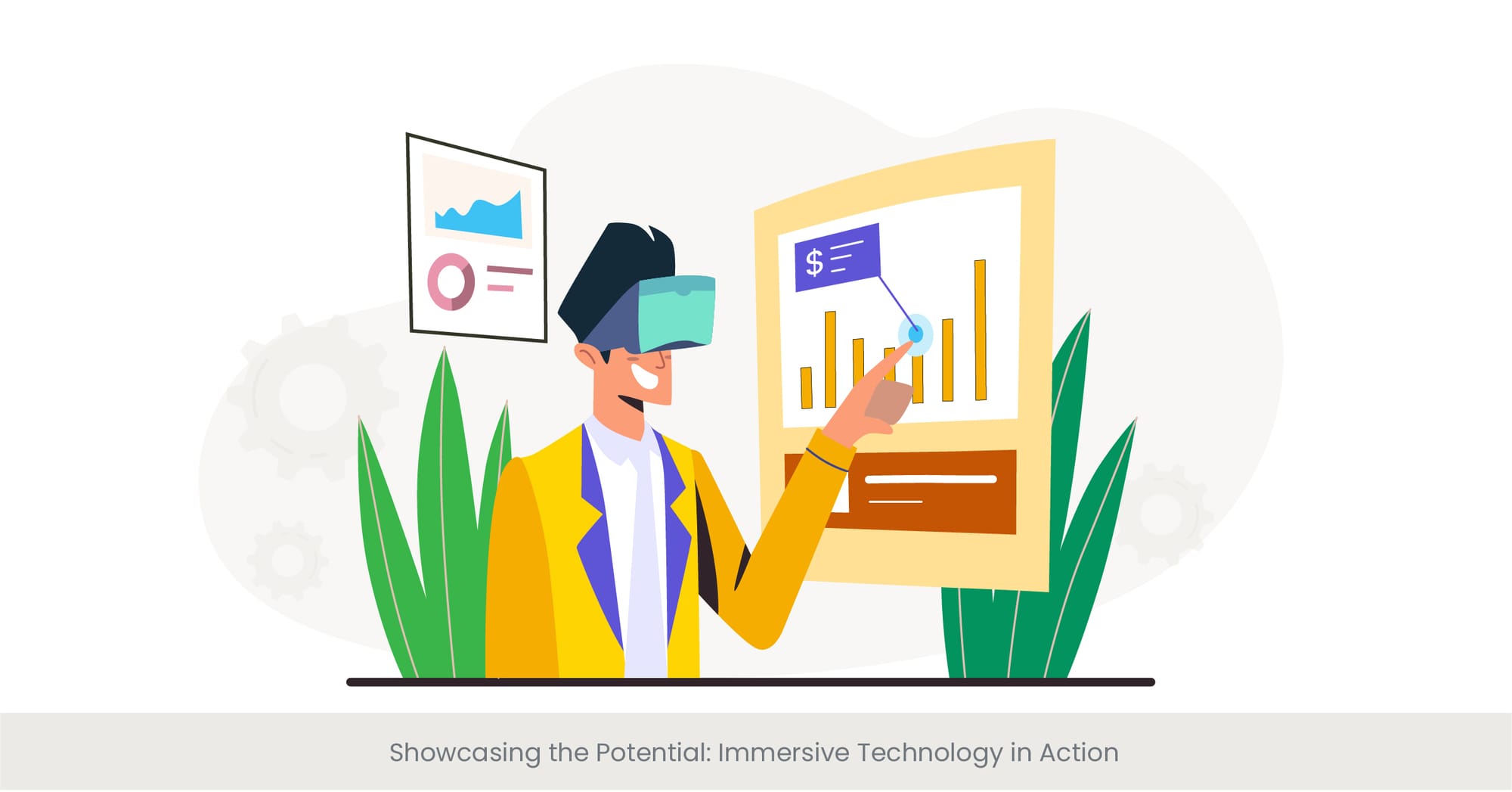
The practical applications of wide screen and immersive technology span various industries and event types. In the entertainment sector, concerts and theater productions utilize wide screens to extend the stage and immerse the audience in the performance. In the corporate world, companies have employed these technologies during product launches and conferences to create engaging presentations that highlight features and benefits in a compelling narrative form. These examples illustrate the versatility and impact of immersive technologies in enhancing the live event experience.
Evidence of Impact and Future Outlook
The effectiveness of wide screen and immersive technologies in engaging audiences is well-supported by research. Studies indicate that events utilizing these technologies achieve higher levels of attendee satisfaction and engagement compared to traditional formats. Furthermore, industry forecasts suggest a continued growth trajectory for immersive event technologies, driven by ongoing innovations and a growing demand for dynamic, interactive event experiences. This trend underscores the critical role of wide screen and immersive technologies in shaping the future of live events, promising even more advanced and captivating experiences in the years to come.
The Role of Sound Design in Immersive Presentations
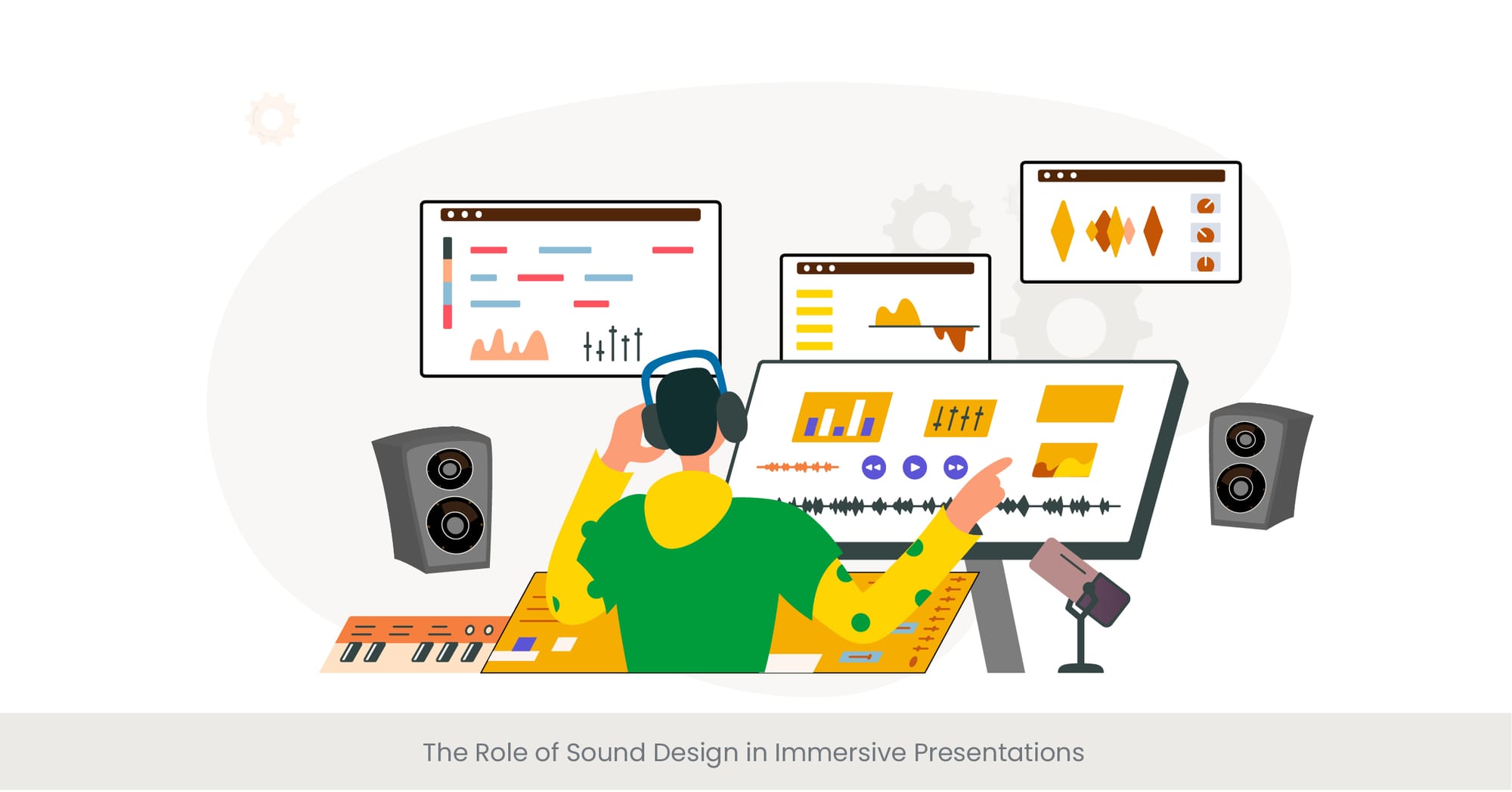
The Symphony of Sound in Live Events
Sound design plays an indispensable role in crafting immersive presentations, transforming the auditory experience into a powerful emotional and sensory journey. Beyond the visual spectacle of LED video walls and high-resolution displays, it's the sound that envelops the audience, creating an atmosphere that can transport them to another place or heighten the impact of the visual narrative. Effective sound design integrates seamlessly with visual elements, ensuring a cohesive and immersive experience that captivates attendees from start to finish.
Harmonizing Technology and Creativity in Sound
The art of sound design in live events is a delicate balance between technological prowess and creative vision. Advances in audio technology have provided sound designers with an array of tools to sculpt the auditory landscape with precision. From spatial audio that offers a three-dimensional sound experience to crystal-clear high-fidelity systems, these technologies allow for the creation of soundscapes that are as intricate and dynamic as the visual components they accompany. This integration of sound with high-resolution LED panels and custom video wall displays elevates the overall sensory impact of an event.
Illustrating the Impact: Sound Design Success Stories
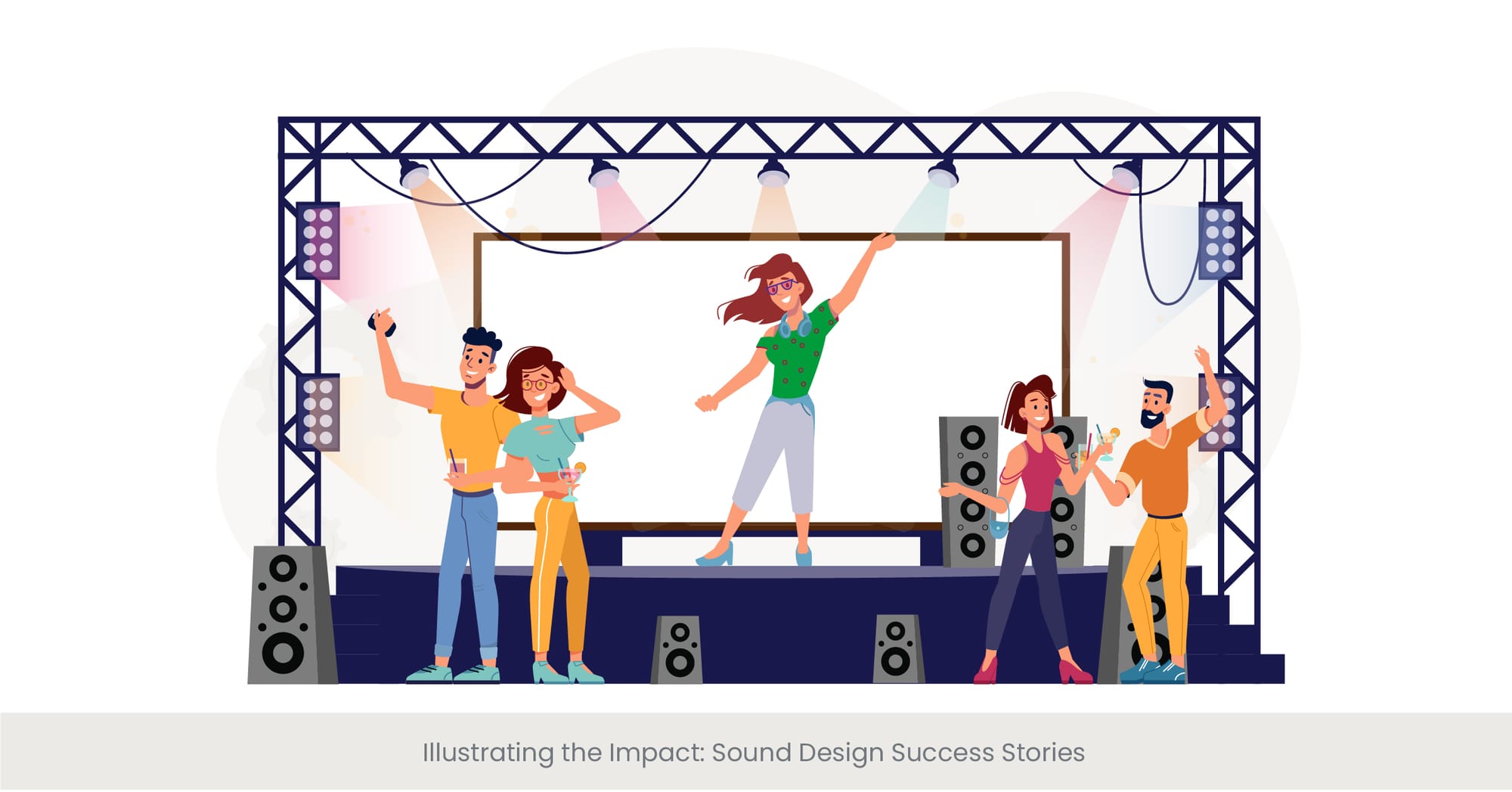
Notable examples of effective sound design abound in the live event industry. Concerts often serve as a showcase for innovative sound techniques, with artists using surround sound systems to envelop the audience in music, creating a sense of intimacy despite the scale of the venue. Similarly, corporate events and conferences have leveraged tailored soundscapes to enhance presentations, using audio cues to reinforce key messages and maintain audience engagement. These instances highlight the transformative potential of sound design in enhancing the immersive quality of live events.
Sound Design Insights and Future Directions
The significance of sound design in creating immersive presentations is underscored by industry research, the latest trends which consistently points to the role of sound in elevating audience engagement and satisfaction. Experts predict that the future of sound design will see even more integration with emerging technologies, such as VR and AR, offering new possibilities for creating immersive auditory experiences. As the demand for multisensory events continues to grow, the role of sound design in live event technology is set to become even more pivotal, ensuring that audiences are not just spectators but active participants in a fully immersive experience.
Best Practices for Technology Setup and Testing

Ensuring Seamless Execution with Rigorous Setup and Testing
The foundation of a successful live event lies in the meticulous setup and testing of technology. This process is crucial for ensuring that all elements, from event LED screens to video walls to sound systems, function harmoniously during the event. Best practices in technology setup and testing not only mitigate technical glitches but also enhance the overall quality of the presentation, providing audiences with a seamless and immersive experience.
The Key Steps in Effective Event Technology Preparation
The preparation phase involves several key steps, starting with a comprehensive technical rehearsal. This includes testing every component of the live event technology setup, such as LED displays, video walls, sound systems, and any immersive technology like VR or AR elements. Connectivity tests are vital to ensure seamless integration between different technologies, while calibration of video and audio equipment is necessary for optimal performance. Attention to detail during these tests can prevent issues that might otherwise detract from the event's impact.
Learning from the Field: Examples of Meticulous Tech Prep

The importance of rigorous setup and testing is evident in the success stories of major events. For instance, international conferences often employ complex AV setups requiring extensive testing to ensure that presentations are delivered flawlessly across various platforms, including live streaming for remote audiences. Concerts, with their elaborate sound and lighting designs, offer another example where thorough technical rehearsals are essential for creating the desired audience impact, underscoring the critical nature of this preparation phase.
Validating Best Practices Through Industry Standards
Research and case studies from the live event industry highlight the effectiveness of thorough technology setup and testing. Events that adhere to rigorous testing protocols consistently report fewer technical issues and higher attendee satisfaction. Industry guidelines and standards further emphasize the importance of this phase, recommending early and comprehensive testing as part of the event planning process. As technology continues to evolve, these best practices remain a constant, ensuring that live events deliver on their promise of immersive and engaging experiences.
Engaging Remote Audiences with Live Streaming

Bridging Distances with Live Streaming Technologies
In today's interconnected world, live streaming has emerged as a vital tool for engaging remote audiences, allowing them to experience events as if they were there in person. This technology extends the reach of live events beyond physical venues, breaking down geographical barriers and increasing accessibility. Whether it's a global conference, a product launch, or a live performance, live streaming ensures that no one misses out on the action, making every event a global experience.
The Mechanics of Live Streaming for Events
Live streaming leverages advanced broadcasting technology to deliver real-time video and audio to viewers anywhere in the world. This involves a combination of high-quality cameras, robust encoding software, and reliable streaming platforms. The key is to maintain high standards of video and audio quality, ensuring that remote audiences receive a clear and uninterrupted feed. This often requires integrating with existing event AV setups, including LED video walls and camera and sound systems, to capture the essence of the live experience.
Highlighting Success: Live Streaming in Action

The power of live streaming to engage remote audiences has been demonstrated across various sectors. Educational institutions have successfully used live streaming for lectures and seminars, allowing students to participate from anywhere. In the corporate sphere, major product launches have reached global audiences, generating excitement and engagement on an unprecedented scale. These examples showcase the versatility of live streaming in connecting people, regardless of their physical location.
Supporting Data and Future Prospects
Studies have shown that live streaming can significantly expand audience reach and engagement, with viewers appreciating the opportunity to be part of events they cannot physically attend. The demand for live streaming is expected to continue growing, driven by advancements in streaming technology and increasing audience expectations for accessibility. As we look to the future, live streaming will undoubtedly play an even more integral role in the live event ecosystem, further enhancing the inclusivity and reach of immersive presentations.
Virtual Reality and Augmented Reality in Events
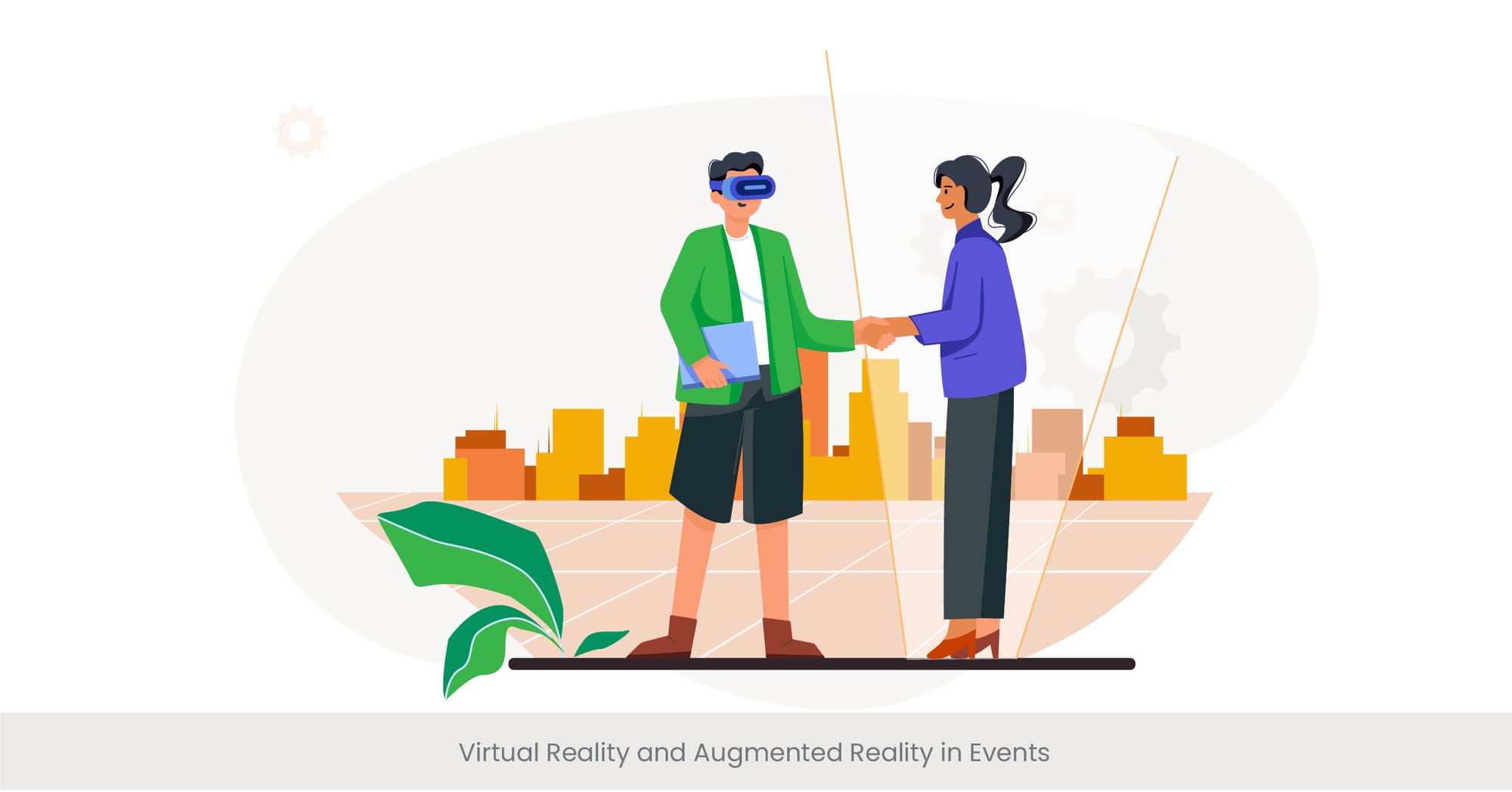
Immersing Audiences with Cutting-Edge VR and AR Experiences
The integration of Virtual Reality (VR) and Augmented Reality (AR) into live events represents a leap towards truly immersive experiences. These technologies offer attendees more than just a passive viewing experience; they provide an interactive and engaging way to explore content in a three-dimensional space. VR immerses users in a completely virtual environment, while AR overlays digital information onto the real world, enhancing the physical event space with interactive, digital elements.
The Technological Backbone of VR and AR in Live Events
Implementing VR and AR in events requires a blend of sophisticated hardware and software. VR setups typically involve headsets that completely cover the eyes, transporting users to virtual worlds. AR, on the other hand, might use devices like tablets, smartphones, or even AR glasses to superimpose digital images onto the real environment. Both technologies rely on high-resolution displays and sensors to track user movements and adjust the digital environment accordingly, creating a seamless and responsive experience.
Showcasing Innovation: Real-World Applications of VR and AR
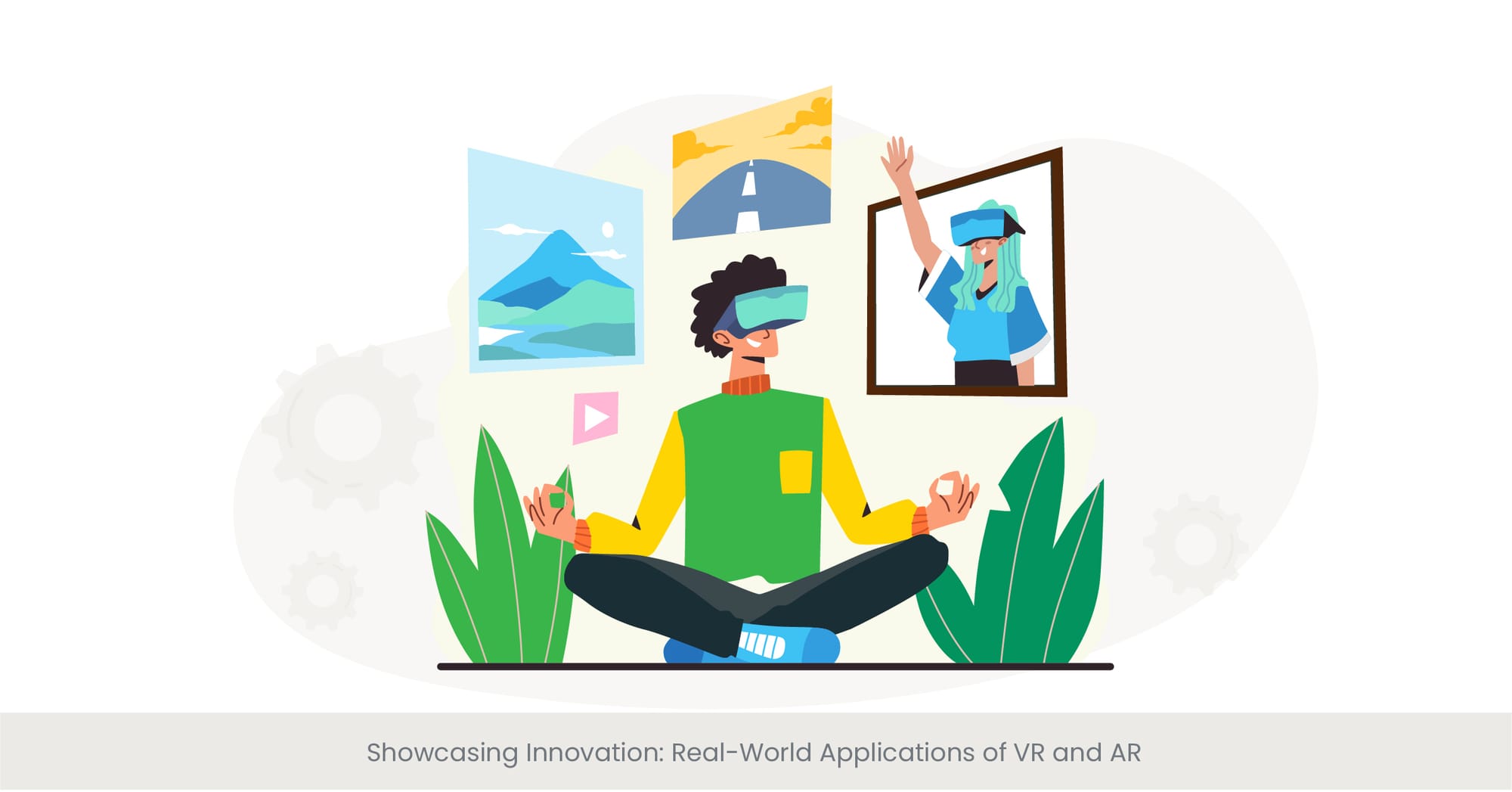
The practical applications of VR and AR in live events are vast and varied. For example, trade shows and exhibitions often use AR to bring products to life, allowing attendees to interact with 3D models or explore features in detail. VR has been used effectively in training and education within conferences, offering immersive learning sessions that enhance understanding and retention. These examples highlight the potential of VR and AR to add depth and interactivity to event experiences, making them more memorable and engaging.
Future Directions and Industry Insights
The future of VR and AR in live events is incredibly promising, with ongoing advancements in technology making these experiences more accessible and impactful. Industry research supports the growing interest in these technologies, indicating that audiences increasingly seek immersive and interactive experiences. As VR and AR continue to evolve, they will offer even more opportunities for event organizers to create engaging and innovative presentations that captivate both in-person and remote audiences.
Integrating event showcase presentations with event planning presentation slides and virtual event presentation designs ensures a cohesive and well-rounded experience. Whether in-person or online, syncing these three components guarantees a smooth flow from the planning stages to the actual event, enhancing the attendee experience and overall event impact.
Case Studies: Immersive Technology in Action

Innovating Engagement Through Immersive Technology
Exploring case studies of immersive technology in live events unveils the transformative power of these tools in creating memorable experiences. From global conferences to intimate concerts, the strategic deployment of technologies like LED displays, VR, AR, and advanced sound design has set new benchmarks for audience engagement business communication, and interaction. These real-world examples not only demonstrate the practical applications of immersive technology but also offer insights into the strategies behind their success.
Highlighting Breakthroughs in Live Event Experiences
One notable case study involves a tech conference that utilized a combination of custom video wall displays and AR to show presenters and product demos. This approach allowed attendees to interact with the technology on a personal level, significantly increasing engagement. Another example is a music festival that integrated high-resolution LED panels with spatial audio design, creating an enveloping atmosphere that transported attendees to a different world, enhancing the overall impact of the performances.
Learning from Success: Key Takeaways

These case studies reveal several key factors for the successful integration of immersive technology in events. Firstly, the importance of seamless technology integration to avoid disrupting the user experience. Secondly, the need for content that is specifically designed for immersive formats, ensuring that the technology enhances rather than overshadows the event's message. Lastly, the value of audience interaction as a means to deepen engagement and create lasting impressions.
The Road Ahead: Insights and Innovations
Reflecting on these case studies, it's clear that immersive technology will continue to play a crucial role in the evolution of live events. Industry analyses predict a surge in the adoption of these technologies, driven by their proven ability to elevate the attendee experience. As we look to the future, the ongoing innovation in immersive technology promises to unlock new possibilities for engagement, making every event a unique and unforgettable journey.
Future Trends in Live Event Technology
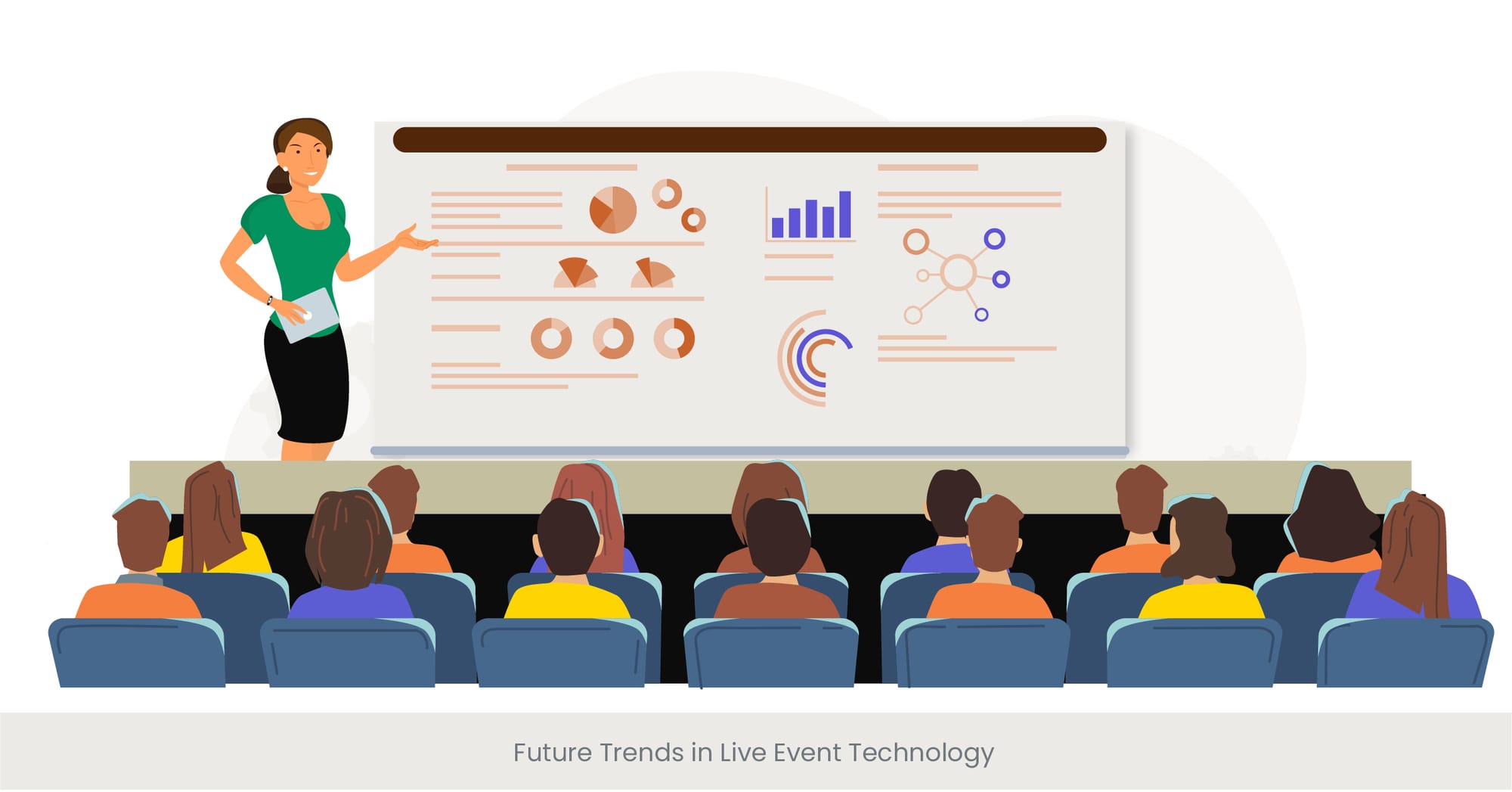
Anticipating the Next Wave of Event Innovations
As we look towards the horizon of live event technology, the future holds promising advancements that promise to further revolutionize how we experience events. The rapid pace of technological innovation, driven by an insatiable demand large audiences for more immersive and engaging experiences, indicates a future where events are not just seen or heard but fully experienced in multi-sensory environments. These upcoming trends are set to redefine the boundaries of audience engagement, offering glimpses into the potential of tomorrow's live events.
Emerging Technologies Shaping Future Events
Key among future trends is the further integration of Artificial Intelligence (AI) and Machine Learning (ML) in event production and management. These technologies will offer personalized attendee experiences through smart recommendations, interactive guides, and automated customer service. Additionally, the evolution of 5G technology promises to enhance live streaming capabilities, providing high-definition, real-time content to remote audiences with minimal latency. The advancement in holographic technology will also play a significant role, offering new ways to present content and speakers in lifelike three-dimensional forms.
The Future of Immersive and Interactive Experiences
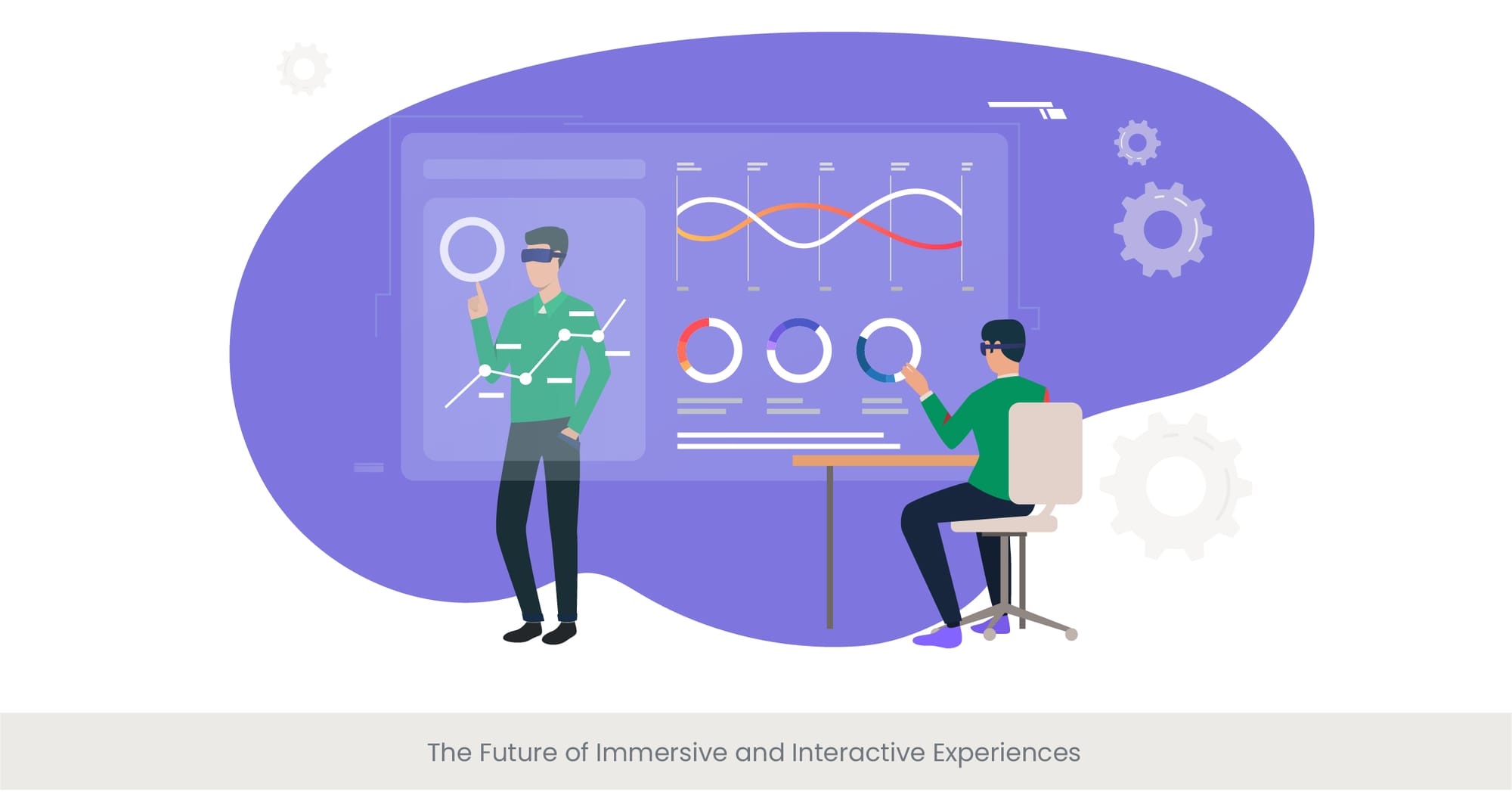
The development of more sophisticated VR and AR applications will continue to blur the lines between physical and digital spaces, offering attendees novel ways to interact with content, environments, and each other. We can also anticipate the rise of virtual venues, where events virtual meetings are hosted in entirely digital spaces, offering unparalleled flexibility in design and scale. These virtual spaces will not only cater to remote participants but also offer unique experiences that are impossible in the physical world.
Guided by Insights and Innovation
The trajectory for live event technology is guided by both market demand and technological innovations. Studies and surveys indicate a growing appetite among audiences for experiences that are not only visually stunning but also personally engaging and interactive. As event planners and technology developers collaborate more closely, the future of live events looks to be an exciting blend of creativity, technology, and human connection, setting the stage for experiences that are more inclusive, engaging, and memorable than ever before.
FAQs: Embracing Live Event Technology for Immersive Presentations
What is the production of a live show?
The production of a live show involves planning, coordinating, and executing various technical and creative elements to deliver a live performance or event. This includes sound, lighting, video, staging, and special effects, all integrated to enhance the live experience.
What does AV mean in event planning?
AV, or audiovisual, refers to the use of both sound and visual components in events. AV technology is crucial in event planning for presentations, music, video playback, and enhancing the overall sensory experience of the attendees.
What is AV in production?
In production, AV stands for audiovisual content creation and management, involving the production and manipulation of video clips with sound and visual elements. This encompasses the recording, editing, and playback of content in live event settings.
What is an audiovisual event?
An audiovisual event is an event where the main components are sound and visual elements, typically involving the use of technology like projectors, LED screens, sound systems, and lighting to create an engaging experience for the audience.
How much do LED walls cost?
The cost of LED walls can vary widely based on size, resolution, and quality, ranging from a few thousand dollars for small, simple setups to hundreds of thousands for large, high-resolution displays used in major events or installations.
What are the disadvantages of LED walls?
Disadvantages can include high initial costs, the need for regular maintenance, potential for technical issues, and, in some cases, the requirement for a significant power supply.
What is the difference between LED wall and video wall?
An LED wall is made up of direct view LED panels that produce images directly, while a video wall can consist of multiple screens or LED panels working together to display a single image. LED walls generally offer brighter images and more seamless integration compared to traditional video walls.
What is the difference between LED wall and projector?
LED walls provide a bright, high-resolution display that is visible even in well-lit room conditions, while projectors cast images on a surface, which can be affected by ambient light and often require controlled lighting conditions for optimal viewing.
How do you create content for LED walls?
Creating content for LED walls involves designing visuals at high resolutions and considering the unique aspect ratio and scale of the LED wall. This often requires specialized software and a creative approach to make the most of the LED wall's capabilities.
What is LED wall virtual production?
LED wall virtual production is a filmmaking technique that uses large LED screens to create dynamic backgrounds and environments in real-time, replacing green screens. This allows for more interactive and realistic settings during filming.

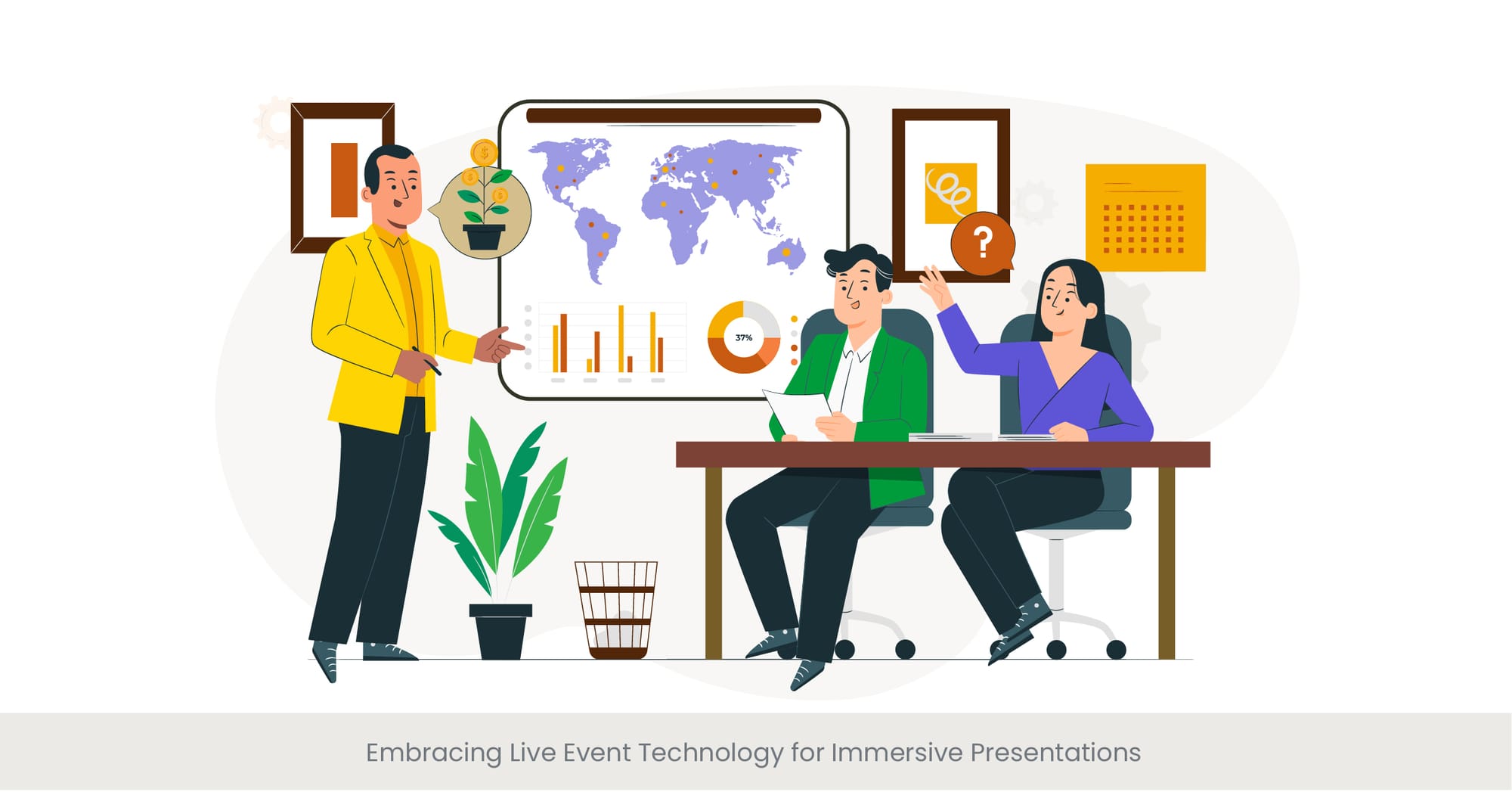

%20(1).jpg)
%20(1).jpg)


